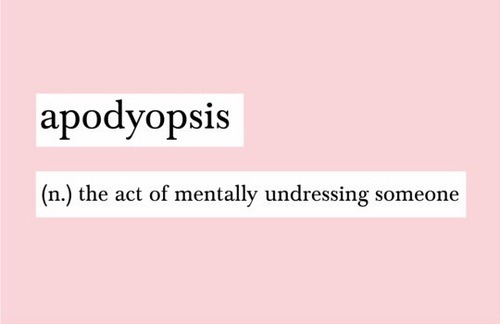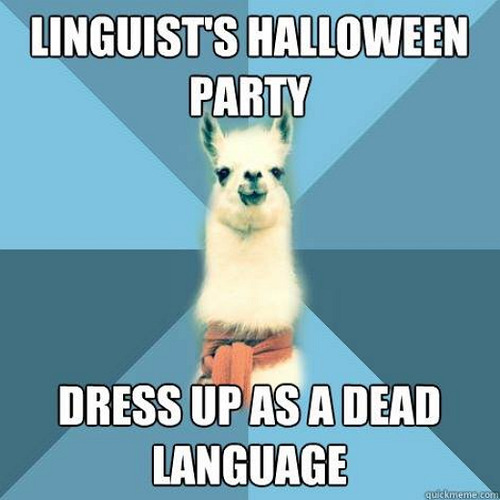Photo

Tell me in your own words... Or not.
4 notes
·
View notes
Photo

Apodyopsis.
One button at a time...
#apodyopsis#word of the day#new#words#language#english#palabras#interesanted#significado#desnudar mentalmente#strip#clothes#naked#mentally undress#learn
6 notes
·
View notes
Text
What explains Asian superiority in certain academic subjects?
What explains Asian superiority in certain academic subjects, such as maths?
It is a widespread idea that language influences thought. An example of this is presented by Malcolm Gladwell, in the book "Outliers" (which we recommend you get hold of). Gladwell argues that this superior performance and achievement has little to do with innate ability but more with the structure of language, endowing the East with significant cultural advantages over the West in various academic subjects and spheres of knowledge.
The words for numbers in Asian countries are shorter than they are in English (for example, 208 is 5 syllables in English, 3 in Chinese), enabling kids to retain more numbers in their heads and therefore do calculations faster.
Their number system is also more intuitive than ours. Take 'eleven', for example. In Chinese, it is literally expressed as "ten-one" (twenty is two-tens, twenty-eight is two-tens-eight, and so forth). This enables Chinese children to count all the way up to one hundred at a significantly younger age than English-speaking kids. On average, four-year-old children in China can count to 40. Kids of the same age in the United States only count to 15, and don't get to 40 until they're five. In other words, on average, five-year-old kids in Asia are already one year ahead of their English-speaking counterparts.
The logic behind their number-naming system ("ten-one") also allows them to carry out basic math problems far more easily. For instance, when a child in England is asked "twenty-seven plus forty-two?", he must convert the words to numbers (27+42) in order to find the solution: 7 plus 2 is 9, and 20 and 40 is 60, which equals 69. When Asian children are asked "two-tens-seven and four-tens-two, no translation from words to numbers is necessary, as the solution lies in the sentence itself.
To set yet another example, when dealing with fractions, we commonly say three-fourths. In Chinese, however, this is literally ‘out of four, take three parts'. This way, language is actually conveying the concept in a much more understandable and simple way.
Succinctly, when it comes to maths and numbers, the English language seems awkward and erratic when compared to the instinctive Asian system.
How are numbers expressed in your native language? Do you feel your mother tongue affects your train of thought?

#malcolm gladwell#outliers#asia#number naming#number system#language#thought#thinking#affect#affects#translation#xl8#1nt#china#chinese#european#american#english#asian#intuitive#instinctive#mother tongue#native language#first language#idioma#idiomas#lengua#lenguas#chino#asiático
0 notes
Text
"Good" is "bad"
Expand your vocabulary. Use five synonyms of "good" today!

#good#vocabulary#léxico#inglés#idioma#lengua#idiomas#bueno#bien#synonyms#sinónimos#language#languagelovers#xl8#words
1 note
·
View note
Text
Language Learning
In this day and age, it is increasingly important to encourage language learning at early childhood. What strategies do you follow with your kids to foster the development of language skills?

#language learning#promote#second language#bilingualism#bilingual#kids#children#teach#teaching#aprendizaje de idiomas#español#inglés#spanish#learn#english#encourage#childhood
1 note
·
View note
Link
#traducción#xl8#nombres propios#antropónimos#príncipe guillermo#prince william#kate middleton#catalina#papado#monarquía#papas#reyes#príncipes#princesas#familia real#español#castellano#inglés#europa#nobleza#t9n
0 notes
Text
Through translations...

A través de la traducción pueden dialogar los distintos idiomas del mundo.
#through translations the different languages of the world can speak to one another#quote#translation#interpretation#frase#cita#traducción#idiomas#languages#lenguas#mundo#comunicación#ngugi#xl8#t9n#1nt
0 notes
Link
This one goes out to all our female followers... We think it may be a great way to start off the week.
Before traveling to Italy, don't forget to learn the common hand gestures. If you can do so with the help of a few male models, better yet!
#hand gestures#italy#body language#gestos#italia#italianos#italians#models#modelos#male#masculinos#male models#gesticular#manos
0 notes
Link
Apparently, lying also has a language of its own.
Noah Zandan and TED-Ed bring us this short animation on how to spot a liar, using communications science and text analysis based on linguistics, in order to decipher the four most common patterns involved in the underlying language of deceit.
#lying#language#patterns#rules#how to know#you're being lied to#behaviour#behavior#comportamiento#mentiroso#mentir#mienten#idioma#patrón#reglas#reconocer#liars
0 notes
Text
Need a costume for the next Halloween?

We know we're running a little late as Halloween was last week, but we couldn't avoid sharing this image we recently came across...
#halloween#humor#humour#funny#translators#translation#interpreters#interpretation#linguistics#linguists#dead language#costume#scary#frightening#lengua muerta#disfraz
2 notes
·
View notes
Text
Sign Language
Did you know that sign language also differs from country to country? Check out the following image and discover which nations share the same roots in terms of signing!

#sign language#lenguaje de signos#signing#señas#genealogía#genealogy#family line#family tree#roots#raíces#american sign language#british sign language#arab sign language#japanese sign language#chinese sign language#french sign language#german sign language
4 notes
·
View notes
Text
Warmduscher
In English, we refer to them as wimps or pansies. In Spanish, they're known as "nenazas" or "blandengues". In German, though, it's a whole different story... They're called "warmduscher", literally meaning "hot showerer". Don't confess your preferred bathing temperature in Deutschland... You may be frowned upon.

#wimp#pansy#blandengue#flojo#nenaza#mariquita#warmduscher#duchador#agua#caliente#warm showerer#dawson leery#dawson's creek#crybaby#llorón#languagelovers#language#translation#german#deutsch#spanish#español#english#inglés#funny#gracioso#humor#humour#xl8#t9n
0 notes
Photo

Ce moment when you start to penser en deux langues at the same temps...
#bilingüe#bilingual#bilingüismo#bilinguisme#bilingualism#mind#brain#humor#funny#gracioso#languagelovers#language#idiomas#langues#cerebro#mente
6 notes
·
View notes
Text
¡Chorizos!

Dada la sucesión de noticias últimamente, en España es común ver carteles con frases como: «no hay pan para tanto chorizo». A raíz de esto, nos asalta la duda... ¿Por qué se utiliza este nombre de embutido como sinónimo de ladrón?
Resulta que en caló, «chorar» es robar y «chori» significa ladrón. Con el tiempo estos términos se volvieron más populares y su uso coloquial entre la población paya se extendió hasta que, por asimilación, se comenzó a hablar de chorizos y de chorizar.
Curiosamente en Cuba, Perú y Venezuela un «choro» es un carterista y «chorear» designa el acto en sí. En Argentina en cambio, un ladrón o estafador es un «chorro».
#chorizo#chorizos#chorizar#choricear#chori#choro#chorear#chorro#caló#romaní#origen#etimología#ladrón#estafador#ladronzuelo#latinoamérica#españa#cuba#venezuela#argentina#perú
1 note
·
View note
Link
¿Qué tienen en común el sexo, el chocolate y el aprendizaje de nuevos idiomas?
Una investigación llevada a cabo por un equipo de científicos españoles y alemanes del Instituto de Investigación Biomédica de Bellvitge, asegura que estos tres elementos activan y estimulan las mismas regiones cerebrales y, por tanto, proporcionan el mismo placer al ser humano. ¿Vosotros qué opináis?
Yes!
Oui !
¡Sí!
#aprender idiomas#gratificante#placentero#sexo#chocolate#instituto de investigación biomédica de bellvitge#barcelona#científicos#investigación#research#cerebro#lenguas
0 notes
Text
Cuba
¿Sabías que hoy, en el año 1492, el almirante Cristóbal Colón descubría Cuba? En la primera toma de contacto bautizó a esta isla con el nombre de Juana, en homenaje al Príncipe de Castilla, hijo de los Reyes Católicos. Pocos años más tarde, en 1515, Fernando el Católico quiso que un territorio llevara su nombre, por lo que decidió que Juana dejaría de llamarse así para dar lugar a un nuevo topónimo... ¡Fernandina! ¿Os imagináis a día de hoy pasando unas vacaciones paradisíacas y moviendo los pies al son de una guajira en la isla Fernandina?
Por suerte, Juana y Fernandina no perduraron en el tiempo y, a pesar de la insistencia por parte de colonizadores, monarcas y cartógrafos en sustituir el nombre original designado por los aborígenes, finalmente ganó la voz local, arahuaca, de «Cuba», que significa 'tierra o terreno'.

#cuba#topónimos#nombres#etimología#origen#fernandina#juana#cristóbal colón#américas#descubrimiento#isla#indígenas#arahuaca#arawak#taíno#tierra#terreno#territorio#aborígenes
0 notes
Text
La evolución de los instrumentos de escritura a lo largo del tiempo. ¿Qué será lo siguiente?

#instrumentos#herramientas#escribir#escritura#writing#tools#evolución#pluma#dedo#máquina de escribir#ordenador#computadora#dispositivo#device#digital
0 notes